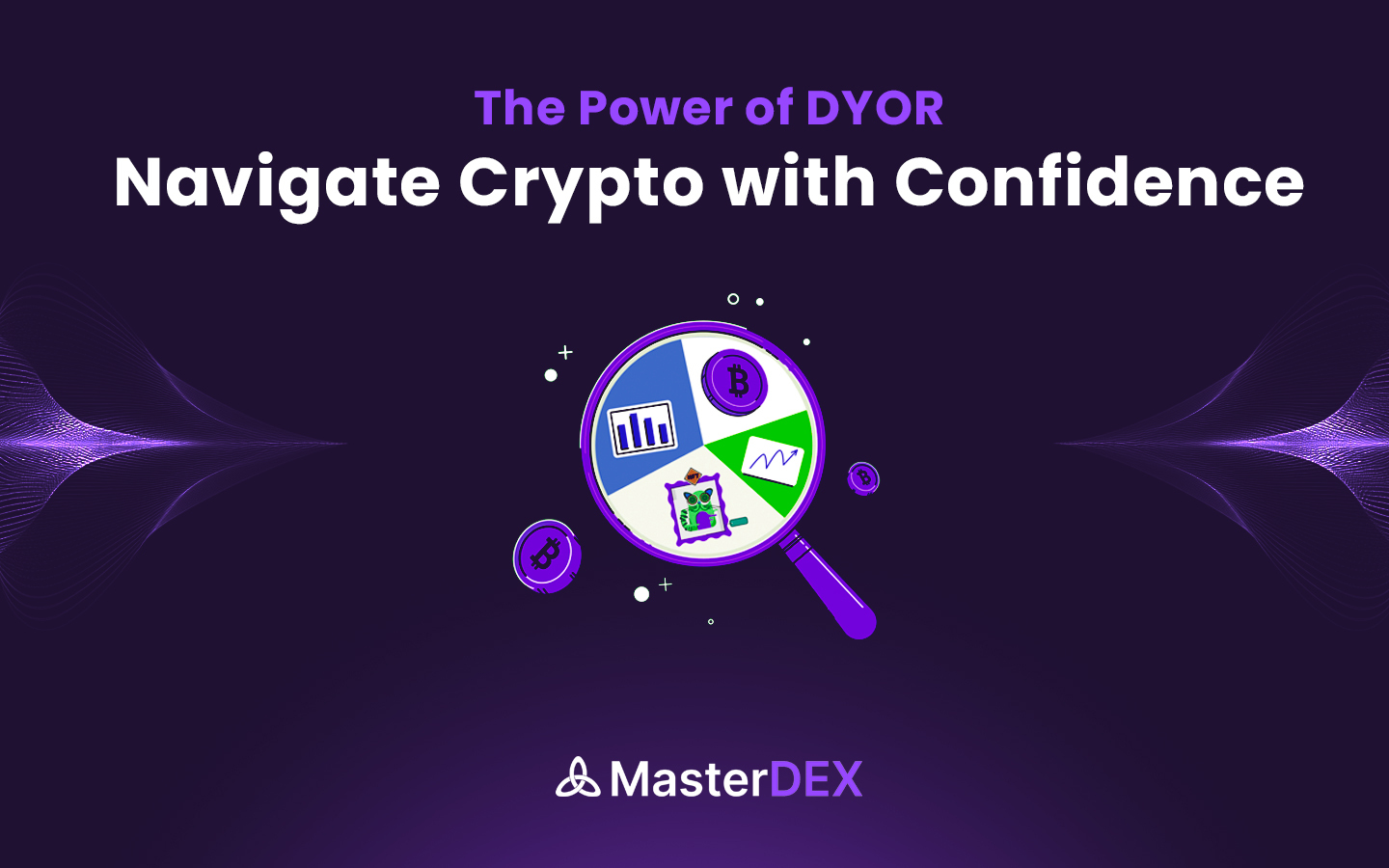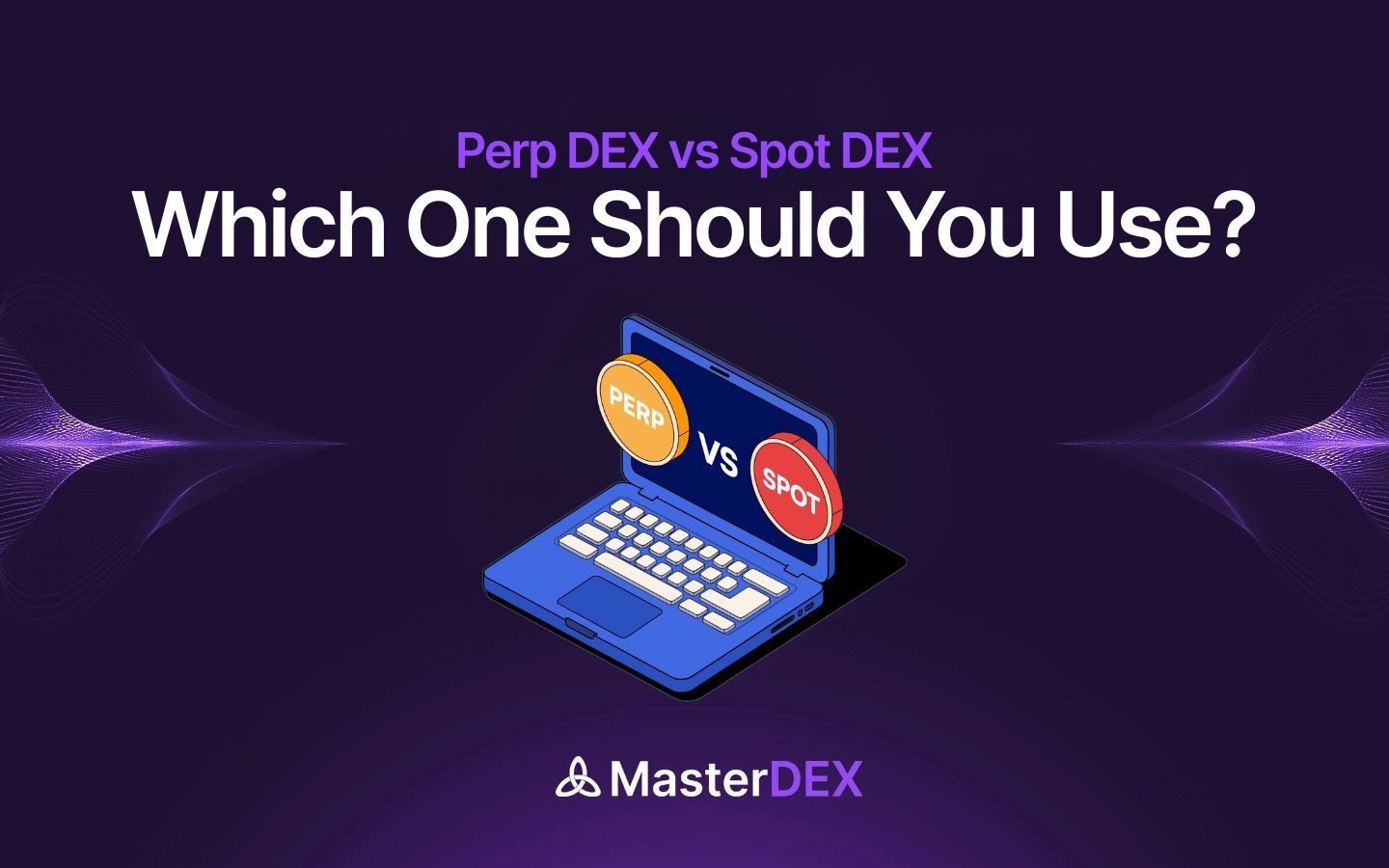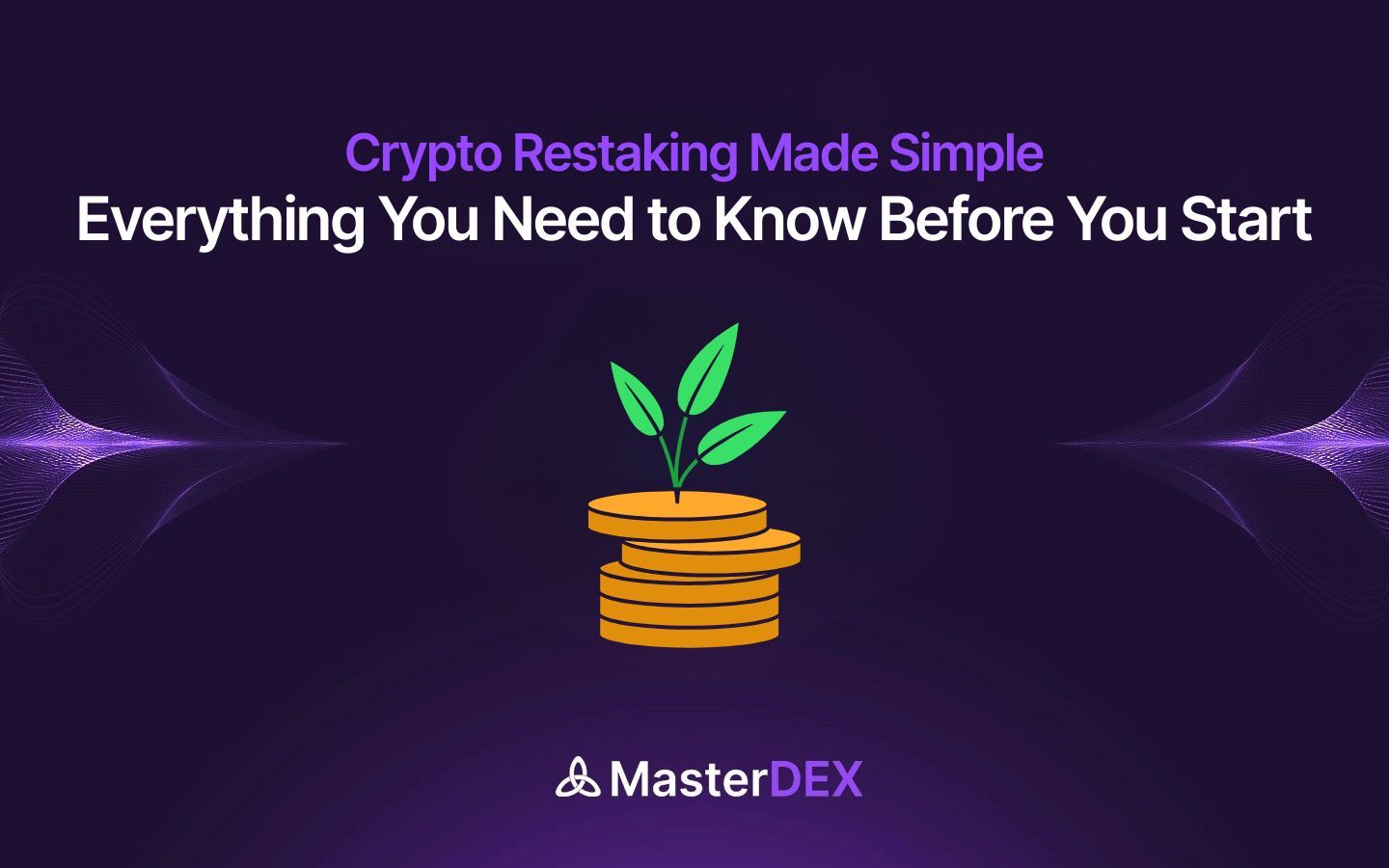In the fast-paced, hype-driven world of cryptocurrency, opportunities for growth and innovation exist alongside scams, pump-and-dump schemes, and dangerously misleading information. As the crypto market remains largely unregulated and decentralized, one principle stands out as crucial for every investor: DYOR, or Do Your Own Research.
DYOR is more than just a catchphrase; it’s a guiding philosophy in the crypto community. It encourages individuals to take responsibility for their own financial decisions by independently researching any project, token, or platform before investing. Unlike traditional finance, where regulatory bodies and financial advisors provide some level of oversight, the crypto ecosystem places the burden of due diligence squarely on the shoulders of individual investors.
In this article, we’ll explore:
- What DYOR means and why it’s essential in crypto?
- What to research when evaluating a cryptocurrency project?
- A step-by-step framework for conducting thorough DYOR
- The benefits of doing your own research
- How to spot red flags and avoid scams?
Whether you’re new to crypto or a seasoned trader, mastering the art of DYOR can protect your capital, build your confidence, and help you make smarter, data-driven investment decisions in a volatile and unpredictable market.
Table of Contents:
ToggleWhat Is DYOR in Crypto?
DYOR stands for “Do Your Own Research.” It’s a widely used principle in the crypto space, reminding investors to independently investigate and verify a project or token before committing any funds. Unlike traditional markets that have analysts, institutions, and regulatory watchdogs, the crypto space is largely self-directed. That means investors are often left to sort through information on their own and that information is often biased, incomplete, or intentionally misleading.
DYOR encourages you to:
- Think critically
- Verify sources
- Avoid herd mentality
- Take full responsibility for your decisions
At its core, DYOR is a self-defense mechanism against scams, misinformation, and impulsive investing. In a space where memes can move markets and influencers can promote unvetted tokens, doing your own research is not optional, it’s essential.
What to Research During DYOR in Crypto?
Effective research in the crypto industry involves looking far beyond social media hype or price trends. It means digging into the fundamentals of a project—its vision, team, use case, token structure, and ecosystem relevance. Here’s what to focus on:
1. Understand the Technology & Vision
Begin by understanding what the project is trying to solve. Ask:
- What real-world problem does it address?
- How does its technology work?
- What makes it different from existing solutions?
Always read the whitepaper and supporting documents. A legitimate project should clearly outline its goals, architecture, consensus mechanisms, scalability solutions, and intended impact. If it sounds vague or full of buzzwords, that’s a red flag.
2. Evaluate the Founders and Team
Who’s behind the project? Look into:
- The experience and credibility of the founding team
- Their track record in crypto, finance, or tech
- Transparency (Do they use real names? Are they active on LinkedIn or GitHub?)
Scams often hide behind anonymous teams or fake profiles. Trustworthy teams usually have visible professional backgrounds and are open about their roles.
3. Adoption, Usage, and Community
A project’s adoption and user engagement are good indicators of viability. Research:
- Daily active users
- Number of transactions
- Developer activity (check GitHub repos)
- Size and sentiment of the community on Telegram, Discord, Twitter, Reddit, etc.
A large, engaged, and growing community can signal organic interest and grassroots support, not just artificial hype.
4. Study Market Sentiment and Price History
Monitor public perception of the project using:
- Forums (e.g., Reddit, Bitcointalk)
- Crypto influencers and analyst commentary
- Historical price movements and trading volume
While price alone isn’t enough for judgment, it can provide insight into market behavior, FOMO cycles, and potential red flags like pump-and-dump patterns.
5. Regulatory Landscape
Always check whether the project or token has:
- Faced legal issues
- Been flagged in your jurisdiction
- Adhered to KYC/AML standards (if applicable)
Some tokens are banned, restricted, or deemed securities in certain countries. Investing in them might lead to legal or tax implications later.
6. Competitor Analysis
Research similar projects:
- What alternatives exist in the market?
- How does your target project compare in terms of performance, innovation, adoption, and community?
Competitive analysis helps you identify whether the project is truly unique or just another clone with good marketing.
Making DYOR Effective: How to Research the Right Way
Assessing Social Media and Community Activity
An effective DYOR process starts with analyzing the project’s presence on key platforms like Twitter, Telegram, Discord, and Reddit. Don’t just look for flashy posts or trending hashtags, dig deeper into the quality of communication. Who is supporting the project? Are respected industry voices, like known developers or crypto CEOs, engaging with or endorsing it? Check the frequency and transparency of updates. Projects that fail to share development progress or meaningful interaction often lack accountability. Consistent engagement and an open dialogue with the community are strong signs of a committed team.
Deep Dive into Fundamentals
Fundamental analysis is the core of any meaningful research. Begin by reading the whitepaper, which should clearly outline the project’s goals, the technology behind it, use cases, token utility, and long-term vision. Avoid projects with whitepapers full of vague claims or technical jargon that doesn’t explain anything concrete. Investigate the team behind the project. How many people are involved, their qualifications, and their experience in blockchain or related industries. Use LinkedIn or GitHub to verify their contributions. A solid team, paired with a realistic and publicly accessible roadmap, significantly boosts a project’s credibility.
Tokenomics Matter More Than You Think
Understanding tokenomics is crucial for determining the financial health and sustainability of a project. Look at how tokens are distributed—an uneven distribution, where a few wallets hold the majority, increases risk and centralization. Evaluate the token’s utility: Does it serve a real function in the ecosystem, like governance, staking, or transaction fees? Also, consider if the token design encourages long-term holding or merely invites speculation. Sound tokenomics should create organic demand and support ecosystem growth, not just benefit early adopters or insiders.
Join and Observe the Community
Don’t stop at public-facing material, get involved in the community. Join Telegram groups, Discord channels, or subreddits where the project is discussed. Ask questions and pay attention to how the team and community respond. A strong project will foster intelligent discussion, provide real answers, and welcome criticism. Be cautious if moderators delete critical questions or if the atmosphere is dominated by unrealistic hype and promises of “guaranteed” returns. A transparent, interactive, and educated community is a strong indicator of legitimacy.
Broaden Your Perspective with External Context
Look beyond the project’s internal messaging. Read news articles, expert opinions, and analytical reports to gather an objective view. Independent media outlets and analyst platforms like CoinDesk, Glassnode, or Token Terminal can offer valuable data that project teams might omit. Consider different viewpoints, especially those that raise concerns or provide critical assessments. Engaging with diverse perspectives helps you form a more balanced, data-driven opinion rather than falling for one-sided hype.
Start Small and Stay Engaged
No matter how promising a project seems, never invest heavily based on research alone. Start with small positions and monitor how things unfold. Watch for consistent delivery of milestones, community responses to updates, and changes in market sentiment. DYOR doesn’t end after your first investment, it’s an ongoing commitment. Projects evolve, regulations change, and new information always surfaces. Regular research is essential to protect your capital and keep your strategy aligned with real-world developments.
Why DYOR Is Essential in the Crypto Space
Now comes the question: Why is DYOR essential in the crypto ecosystem? Lets understand this in detail now.
Navigating Market Volatility
The cryptocurrency market is infamous for its extreme volatility. Prices can surge or crash within hours based on news, social media speculation, or even rumors. Without proper research, it’s easy to fall victim to emotional decisions, such as panic selling or buying into overhyped tokens. DYOR helps investors understand the broader market dynamics, evaluate risk more accurately, and recognize whether a price movement is backed by real fundamentals or just short-term noise. This awareness can reduce the chances of impulsive and costly mistakes.
Evaluating Projects with Confidence
In a space flooded with thousands of tokens and projects—many with grand promises but little substance—DYOR is your filter. It allows you to critically assess the legitimacy of any given project by examining its technology, whitepaper, team, tokenomics, and use case. Instead of relying on influencer tweets or Reddit threads, you build your own criteria for identifying valuable investments. With a structured approach to research, you can confidently separate high-potential projects from those that are all hype and no product.
Managing Risk in an Unregulated Environment
Unlike traditional finance, the crypto industry operates in a largely unregulated space. There are no safety nets, no central authority to guarantee your funds, and limited recourse in case something goes wrong. This makes risk management even more critical. Thorough research allows you to identify security risks, sketchy tokenomics, rug-pull potential, or legal red flags before you invest. Knowing these risks in advance helps you adjust your portfolio size, diversify wisely, and put in place strategies to protect your assets.
Avoiding Scams and Fraud
The anonymity and speed of crypto make it fertile ground for scams—fake tokens, phishing schemes, Ponzi projects, and rug pulls are unfortunately common. DYOR helps you recognize warning signs such as anonymous teams, plagiarized whitepapers, overpromised returns, or lack of working products. Many scams can be avoided simply by verifying facts, checking team credentials, and cross-referencing claims with credible third-party sources. In this space, skepticism isn’t cynicism—it’s protection.
Empowering Independent Thinking
One of the biggest psychological traps in crypto is herd mentality—buying because everyone else is buying. DYOR combats this by encouraging independent thinking and decision-making. Instead of being influenced by social trends or fear of missing out (FOMO), you rely on your own understanding of a project’s fundamentals. This builds confidence and self-reliance, turning you into a more resilient and objective investor who isn’t easily swayed by hype or panic.
Promoting Continuous Learning
Lastly, DYOR promotes continuous learning and personal growth. Every time you research a new token, protocol, or blockchain ecosystem, you’re expanding your knowledge of crypto, finance, technology, and economics. This cumulative learning makes you a more informed participant in the industry, able to adapt to new trends, identify innovation early, and understand the broader implications of market developments. In the long run, this education is one of the most valuable assets you can gain.
Step-by-Step DYOR Framework in Crypto
Step 1: Identify the Right Assets to Research
The first step in doing your own research is selecting the right type of asset based on your personal investment goals and risk tolerance. Not all cryptocurrencies are created equal—some are established such as Bitcoin and Ethereum, while others are speculative altcoins or emerging DeFi projects. If you’re new or risk-averse, start with well-known, high-liquidity assets. If you’re comfortable with higher risk and volatility, you might explore newer, undervalued projects. Always check how long the project has been around and whether it has credible backers or institutional support, as this can be a good initial credibility filter.
Step 2: Read the Whitepaper and Technical Docs
Once you’ve identified a promising asset, go directly to the source—the whitepaper. This is where the project lays out its problem statement, technology, goals, tokenomics, and implementation plan. Don’t stop at marketing summaries. Read the technical documentation to understand how the system works under the hood. Look for clarity, transparency, and a compelling use case. If the whitepaper avoids specifics or makes outrageous claims without supporting evidence, consider it a major red flag.
Step 3: Engage With the Community
Dive into the project’s community hubs—Discord, Telegram, Reddit, and Twitter. Observe how members interact. Are they informed and constructive or simply hyping the token price? Ask questions about the roadmap, token utility, or team experience and evaluate the quality of responses. A transparent and communicative team that openly addresses concerns signals reliability. Beware of overly aggressive moderation or communities that discourage questions—these often indicate insecurity or hidden issues.
Step 4: Verify Through External Sources
Don’t rely solely on internal messaging. Broaden your research by reading third-party reviews, market analysis, and industry commentary. Use platforms like CoinDesk, Messari, Glassnode, or Token Terminal for deeper insights. Check YouTube or Twitter for commentary from respected analysts, but always verify what you hear. Look for consistency between public perception and the project’s claims. If the external sentiment is heavily negative or suspicious, it’s worth digging deeper or stepping back.
Step 5: Start Small and Track Performance
Once you’ve done the research and are satisfied with your findings, consider making a small test investment. Monitor how the project performs over time—how frequently the team delivers updates, how the token behaves under market pressure, and whether they hit roadmap milestones. Treat this phase as a real-world audit of the project’s execution. If everything aligns with your expectations, you can consider increasing your position gradually. But always keep position sizing in check and never risk more than you can afford to lose.
Step 6: Continue Researching Even After Investing
DYOR doesn’t end after the first transaction. Crypto markets evolve rapidly, and even solid projects can lose momentum or face unexpected challenges. Keep tracking project updates, community sentiment, development activity, and any changes in tokenomics or regulation. One of the popular and best DeFi aggregators that you can utilize is MasterDEX. In the crypto space, it is always recommended to reassess your holdings regularly and don’t hesitate to exit if your original thesis no longer holds. The ability to adapt is just as important as the ability to research.
Conclusion
In the fast-paced, often unpredictable world of cryptocurrency, doing your own research (DYOR) isn’t just good advice; it’s essential. With countless projects, extreme market volatility, and the looming risk of scams, DYOR empowers you to make confident, independent investment decisions. By understanding the technology, evaluating teams and tokenomics, engaging with communities, and verifying information through multiple sources, you reduce risk and increase your chances of success.
Remember, DYOR is not a one-time task but an ongoing process of learning and adaptation. It builds your knowledge, sharpens your judgment, and helps you navigate the crypto landscape with greater awareness and resilience. Ultimately, in a market where few guarantees exist, your own research is the most valuable tool you have to protect your investments and unlock potential opportunities.
Stay curious, stay cautious, and let DYOR guide your crypto journey.



